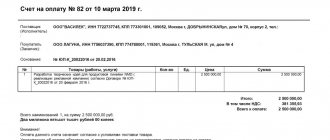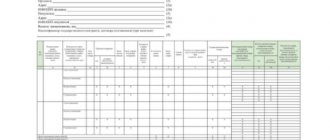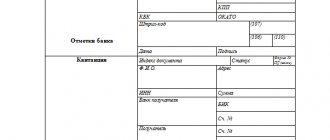Why do you need an account?
An invoice is a payment document that is generated by the seller and sent to the buyer in order to make mutual settlements for purchased goods and services provided.
It states the terms of the transaction, defining specific goods and services, as well as how to purchase them. An invoice can be issued either on the basis of a concluded contract or without it. Issuing an invoice for payment and signing it by the payer, as a rule, means the latter’s confirmed agreement to pay for the purchased goods and services. If you attach a cash receipt (sales receipt) to the calculation, the transaction will have the same legal force as the concluded contract.
The supplier can issue a paper invoice or make an invoice online. Under the terms of the contract or oral agreement, settlement documentation is issued either before the buyer receives goods or services, or upon delivery.
In accordance with current legislation, the seller has the right not to issue an invoice on paper or online. When making mutual payments, it will be enough to indicate an invoice that accompanies all transactions subject to VAT. However, there is a list of situations in which issuing an invoice (on paper or online) is mandatory:
- If the customer settles with the supplier for an amount that is unknown in advance and not fixed in the contract (for example, communication services, utilities, maintenance).
- In case of prepayment for goods and services.
In practice, there are also frequent cases in which a company has to re-invoice. This is possible when goods or services are received by one institution and payment is made by another (lease agreement, under a commission agreement or on behalf).
In order to re-set the payment register online, the terms of the contract must stipulate the obligation of one party to the transaction to pay for the obligations of the other.
Mandatory use
The mandatory use of an invoice for payment of services is not regulated by law. Payment can be made based on agreements.
The account does not relate to accounting reporting documents, but is used for internal use.
However, there are cases when an invoice is a mandatory accompaniment of a transaction:
- If the amount to be paid was not specified in the text of the agreement.
- For transactions involving the payment of VAT.
- If the selling organization is exempt from VAT.
- The seller company, located on OSNO, sells goods on its own behalf or provides services under agent agreements.
- If the customer made an advance payment to the seller company or transferred an advance payment for a product or service.
Invoice format
Current legislation does not regulate the formal type of account, that is, there is no unified form for paper or online forms. The invoice form can be developed by the organization independently. The institution also has the right to issue an invoice using numerous templates. The main thing that an accountant should know in this case is what details are needed to issue an invoice online.
In order to issue a paper or online invoice, you must fill in the following information:
- serial number and date of invoice generation;
- name of the seller and buyer, their legal and actual addresses;
- organizational (TIN, KPP, OGRN) and bank details from both parties;
- information about the purchased goods, works or services - their name, quantitative, qualitative (unit of measurement) and cost characteristics;
- presence (absence) of VAT;
- if necessary, the deadline for payment;
- responsible persons of the parties, their initials and signatures: for individual entrepreneurs - one signature, for commercial and non-profit organizations - two signatures (manager and chief accountant);
- for a paper document (if available) - print.
Basic rules for filling out, sample invoice
If you sell goods or services subject to VAT, you need to fill out the invoice as follows:
- In the column “Goods (work, services)” we indicate the name of the goods or services that need to be paid.
- In the “Quantity” column we enter the number corresponding to the quantity of goods being sold.
- The “Unit of Measurement” column indicates the names of the units in which the goods to be paid for are measured (pieces, kilograms, meters, etc.).
- The “Price” column indicates the cost per unit of goods, including VAT.
- In the “Amount” column, the full cost of the batch of paid goods is displayed, including VAT separately for each item (that is, VAT is “inside” the cost).
- In the “Total” field, we summarize the cost of all consignments of goods for various items included in the invoice.
- In the field “Including VAT” we indicate the amount of VAT calculated from the total cost of the goods paid for (do not forget that in this case VAT is “internal” to us!).
- The “Total Payable” field indicates the final total amount. Below it is given in words.
The invoice columns can be filled out in a slightly different way: in the “Price” column, the amount can be indicated without VAT. Then the fields “Amount” and “Total” will also be without VAT, and then instead of the field “Including VAT” there will be a field “VAT”, in which it will be necessary to indicate the amount of tax calculated from the full cost of paid goods (but in this case VAT will already be “on top”). The further procedure for filling out the invoice does not differ from the procedure given for the previous case.
For greater clarity, we provide a sample of filling out such an invoice.
Can an individual issue an invoice?
Various types of companies (LLC, PJSC, NPO, etc.), budgetary institutions, and individual entrepreneurs can issue both electronic and paper invoices.
Let's figure out whether individuals can create accounts. If an individual is registered as an individual entrepreneur, then there should be no problems with issuing invoices both on paper and electronically. If a citizen who is not registered as an individual entrepreneur wants to issue an invoice on his own behalf, he is unlikely to succeed.
Such individuals do not pay VAT, and accounts can only be created by those companies or individual entrepreneurs that are payers of value added tax. If an organization receives an invoice prepared by a citizen who is not an individual entrepreneur and does not pay taxes, most likely it will not make payments on it. Therefore, if an individual needs to send an invoice, this can only be done after opening an individual entrepreneur or a company with a different legal form.
If an organization sells goods, work or services to an individual, then there will be no problem in opening an invoice. It is not legally prohibited to issue payment documents to an individual acting as a buyer. In the calculation, the buyer's details include his last name, first name, patronymic and address.
Results
Thus, there is nothing complicated in filling out a VAT invoice. It is enough to carefully fill out all the fields and columns and not get confused when indicating VAT, which, when issuing an invoice, can be either “inside” the amount or “on top”.
To learn about the features of an invoice issued for payment without VAT, read the article “Sample invoice for payment without VAT: fill it out correctly.”
You can find more complete information on the topic in ConsultantPlus. Free trial access to the system for 2 days.
Invoice for payment online
Nowadays, finding a way to issue an invoice for payment electronically is not at all difficult. Many services on the Internet offer the opportunity to issue online invoices absolutely free. This greatly facilitates the work of specialists and simplifies the procedure for issuing payment documents. Invoices generated in this way are sent to the customer by email, after which the buyer prints them out and promptly pays.
In order to issue and send an invoice online, the details and content must be filled out correctly.
Let's look at the procedure for filling out an online account using the example of one of these services.
First of all, enter the account number in order. The serial number may contain letters and numbers; the numbering order is approved in the accounting policy of the organization. Next is the date.
Then fill in the details of the seller and buyer. Data can be entered either by TIN (filled in automatically based on the identification number) or manually.
IMPORTANT!
Please note that the seller’s details must be filled out in detail, since the customer will use them to make payments.
Next, enter information about the product or service, its quantity, price, unit of measurement and value added tax.
At the end of the invoice, the terms of payment are determined.
The completed and verified invoice is saved, printed or sent to the buyer by email for subsequent payment.
How to compose?
There is no unified invoice form; each organization develops its own or uses already developed ones (Form (form) of invoice for payment).
When developing an invoice form, you can follow the instructions below.
The invoice must contain the following information:
- The serial number of the account (according to accounting for the current year) and the date of preparation.
- Payment details of the supplier as the invoicing party: name and legal address, bank details necessary for payment of the invoice by the buyer.
- Details of the payer and consignee. In cases where it is the same, write “same” or copy the information. Names and addresses, their TIN, checkpoint (if these codes are assigned) will be required.
- Names of goods or services, data on their quantity indicating units of measurement (piece, kilogram, meter, etc.), price (in words).
- Is the product/service subject to VAT? When they are not subject to tax, an entry is made in the appropriate column: “Without tax (VAT).” Otherwise, the VAT amount is indicated separately.
- Does the supplier use the simplified tax system or another taxation system? This is important for the tax consequences of the transaction.
- Signatures of the head of the enterprise and the chief accountant, seal (if any).
The invoice for payment is drawn up in two copies, one remains with the person who issued the invoice (although it is not particularly needed), the second is sent to the buyer.
If you make an error in an invoice, it is better to create a new invoice than to correct the data in the erroneous one.
In some cases, when resolving disagreements between the parties in court, the invoice for payment is a document of legal force and can be presented in court.
Important details
However, for an invoice to be recognized as an offer, it must contain the essential terms of the contract, namely:
- name/quantity of goods;
- in what units is it measured;
- tax rate (excise duty, VAT);
- method and term of transfer of products to the buyer / term of payment;
- total amount including tax:
- a separately allocated amount of taxes;
- name of the seller/buyer;
- bank details of the seller/buyer;
- name and signatures of company officials (with transcript);
- invoice date.
It is advisable to put the organization's seal on the document.
What is an invoice for work?
An invoice agreement is not provided for by the Civil Code, however, this form of transaction is in demand when providing services with little material risk, as well as for one-time purchases.
A contract invoice is suitable for transactions with minimal conditions. It can be concluded in two ways - as a bilateral invoice agreement or an invoice offer. In the first case, the document is signed by two parties (contractor and customer), and in the second - only one (the contractor issuing the invoice). At the same time, the invoice offer is not a public offer - the document must contain information about a specific customer, a list of works, their cost, as well as the method of acceptance. As a rule, acceptance of an offer is payment. Please note: both the invoice agreement and the offer invoice are grounds for payment. They contain standard details and basic terms of the transaction, thereby eliminating the need to create two separate documents.









